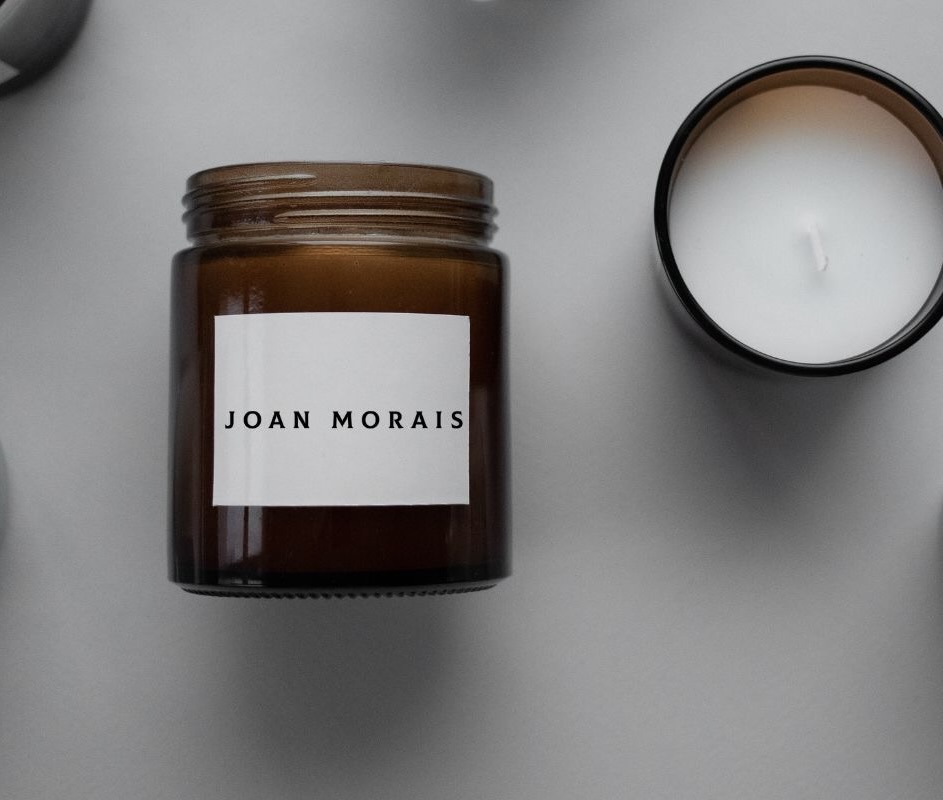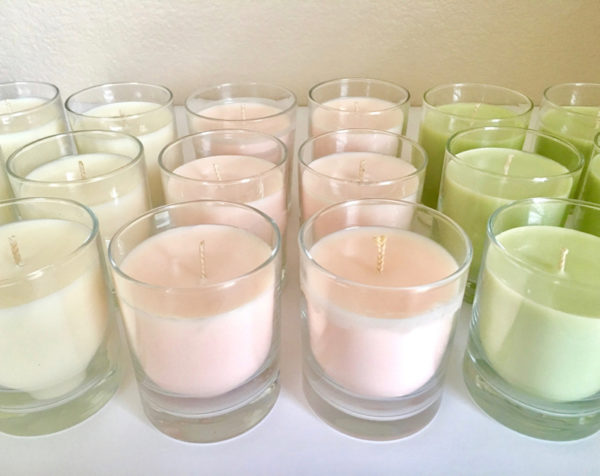
Artisanal Candle Making
Learning how to make artisanal candles with essential oils and natural fragrance is an art and a science. Creating a scent one needs creativity for scent combinations and an understanding, testing and study of how the essential oil scent changes when the candle is burning. Here are some tips to make artisanal candles.
Take a Class
I have experimented a lot with plant waxes, wicks and essential oils for candles. Learn in my class Candle Making I also make the same candle formulas in the class several times a year. The candles in the class have been tested and tried many times.
About Scent
Cold and Hot Scent Throw
Cold scent throw refers to the scent of the candle when the wick has not been lit and the candle burned yet. It is the first impression of a candle. We all smell the cold candle first. Hot scent throw refers to the scent when the candle wick is lit and the candle is burning. Both the cold and hot scent are important and need to have a pleasant scent.
Subtle Scent
We have all become accustomed to strong scented candles with artificial scents. It is the same with artificial perfume we have worn for years. As I have taken artificial scents out of my hair and skin care products, cleaning products and candles, I do not care for strongly scented candles. I now see the need for subtle scent. Wearing perfume, cologne and burning candles should only scent the area near it or near the person. It should not scent an entire room, furniture and clothing affecting others well-being and causing headaches, plugging of the nose and nausea.
When we permeate the entire environment from artificial scents or strong and overpowering scents, we are controlling that environment and if someone else does not like that scent, they suffer. Just like blasting extremely loud music. Just because we like that music, the person next to us may not. I feel the same way about candles. I now scent candles very lightly, to have a pleasant and subtle scent to lightly scent a small area. This way I can burn the candles for 2-4 hours and enjoy the beauty and their brilliant light. I burn candles all over my home almost every day.

Creating Essential Oil Scent Blends
This is an art and a science. An essential oil candle hot scent throw will be different than the cold scent throw. Many essential oils like citrus have a citronella like scent when a candle is burning. The flash point of citrus is low and high heat doesn’t give a pleasing aroma. It’s helpful to know the flash point of essential oils. The scent will last longer with higher flash point essential oils.
Natural Fragrance Oil Scent
There are now natural fragrance oils available for candles derived from plants, essential oils. I use the ones following the ISO 9235 Natural standard. These blends perform nicely in candles. They have a good cold and hot scent throw. These blends are included in the class.
ISO 9235 Aromatic Raw Material Standard
The ISO 9235 standard for Aromatic Raw Material defines these as “natural raw material of vegetal, animal, or microbiological origin, as such, obtained by physical enzymatic or microbiological processes, or obtained by traditional preparation processes (e.g. extraction, distillation, heating, torrefaction, fermentation).”
Candle Wax Melt Temperature and Essential Oil Flash Point
To develop the strongest scent in a candle, it is best to match the flash point of essential oil with the wax melt temperature or wax pour temperature. If the essential oil flash point is similar to or higher than the wax melt temperature, the scent will be stronger. If the flash point of the essential oil is much lower than the wax temperature, there will be very little scent; it will burn off very quickly.
Candle Wax Melt Temperatures
Check with your candle wax supplier for melting and pouring temperatures or do your own testing and record your results.
| Wax | Melting Point | Pouring |
| Bayberry | 112°F-128°F | 120°F-130°F |
| Coconut | 120°F-130°F | 150°F-190°F |
| EcoSoya™ CB- 135 (Q220) | 117°F | 100°F-130°F |
| EcoSoya™ CB-Advanced Soy Container (Q210) | 115°F | 100°F-155°F |
| EcoSoya™ PB Pillar Blend (Q230) | 117°F | 110°F-140°F |
| Palm Wax, CrystalPillar Blend | 143°F | 200°F-210°F |
| Vegetable, Container | 126°F | 175°F-185°F |
| Vegetable, Pillar | 143°F | 175°F-185°F |
Essential Oil Flash Points
Each essential oil flash point can vary depending on the supplier. The flash point is the point an essential oil starts to vaporize. When essential oils are heated up they vaporize and start losing their scent. Essential oils with a low flash point vaporize quickly and there may be very little scent or no scent that stays in the candle. This chart shows a range or average flash point of the essential oil.
| Bay | 135°F-200°F | Lime | 114°F-122°F |
| Basil | 165°F-176°F | Litsea Cubeba | 136°F |
| Bergamot | 110°F-122°F | Orange, Sweet | 115°F |
| Cedarwood | 200°F | Orange, Sweet 10X | 129°F |
| Chamomile Roman | 130°F | Palmarosa | 200°F |
| Cinnamon Leaf | 190°F-200°F | Patchouli | 200°F-212°F |
| Clove | 200°F | Peppermint | 151°F-163°F |
| Fir | 109°F | Petitgrain | 152°F |
| Frankincense | 102°F-117°F | Peru Balsam | 200°F |
| Geranium, Rose | 165°F-176°F | Rosemary | 104°F-113°F |
| Ginger | 135°F -148°F | Sandalwood | 136°F-212°F |
| Grapefruit | 109°F-124°F | Spearmint | 122°F-151°F |
| Jasmine Absolute | 142°F-200°F | Spruce | 108°F-122°F |
| Lavender | 160°F | Tangerine | 115°F-124°F |
| Lemon | 118°F | Vetiver | 200°F-212°F |
| Lemongrass | 160°F-185°F | Ylang Ylang | 192°F-200°F |
Make and Sell Candles
Learn by taking our online class, Candle Making.
These candles are:
- Plant-based, vegan
- Sustainable
- Renewable
- Contain natural scent
- All natural
- Artisanal
Make these candle types:
- Container
- Votive
- Wax melts
- Pillar
- Layered
- Gemstone
- Bayberry
- Tea lights
- Floating
You might also like


Thanks for sharing ????????
Hi Joan
Is there a link to purchase this e-book separately?
R
Hello,
I tried to enrol in the course on making candles with essential oils but it says that the course is no longer offered, is that correct? If so, are there any other resources, videos or e-books by Joan Morais that I could refer to? I am very keen to learn more.
thank you for any assistance,
kind regards,
Ev
Here is the plant-based candles class link https://joanmorais.com//product/plant-based-candle-making-with-essential-oils-class/